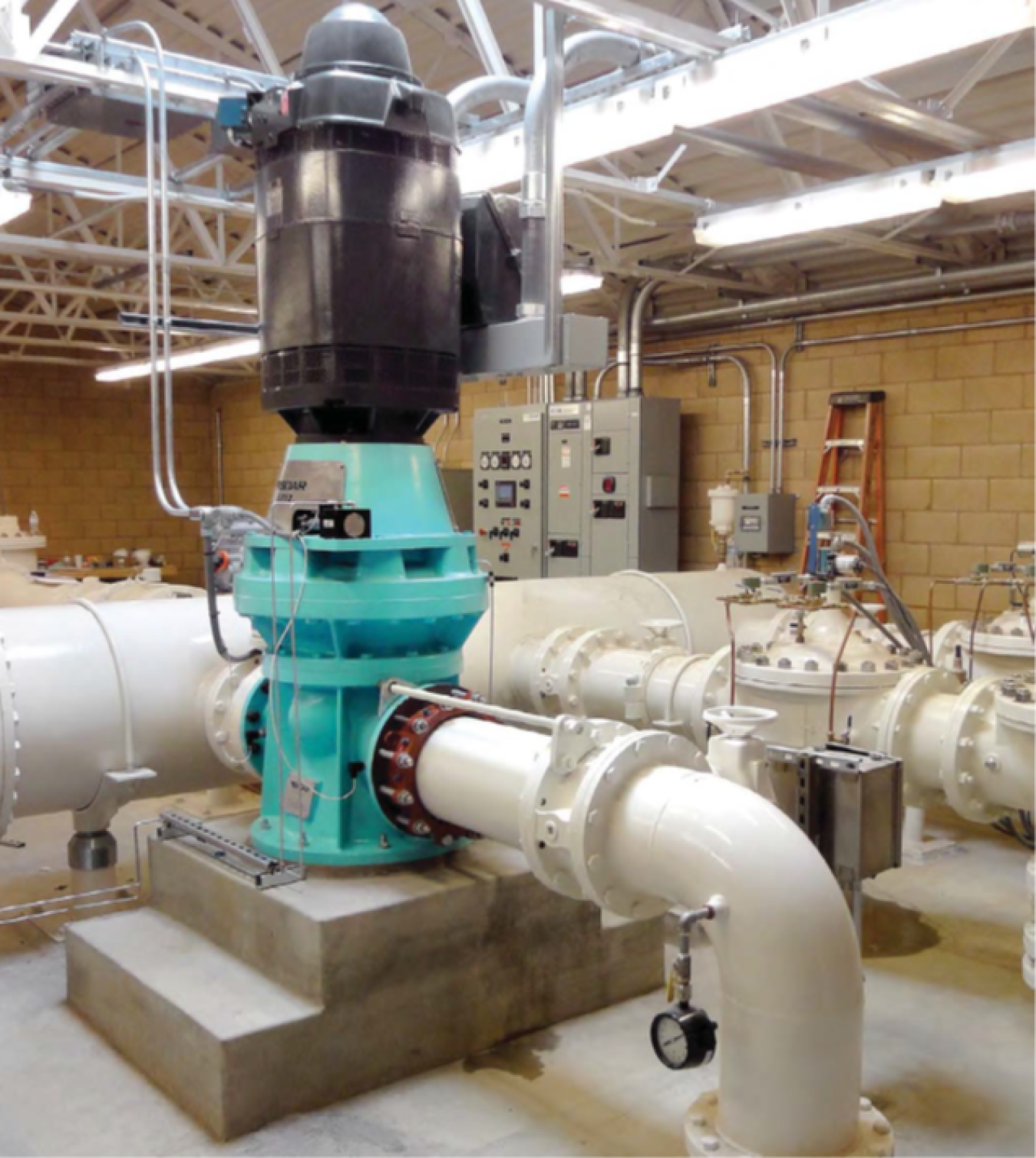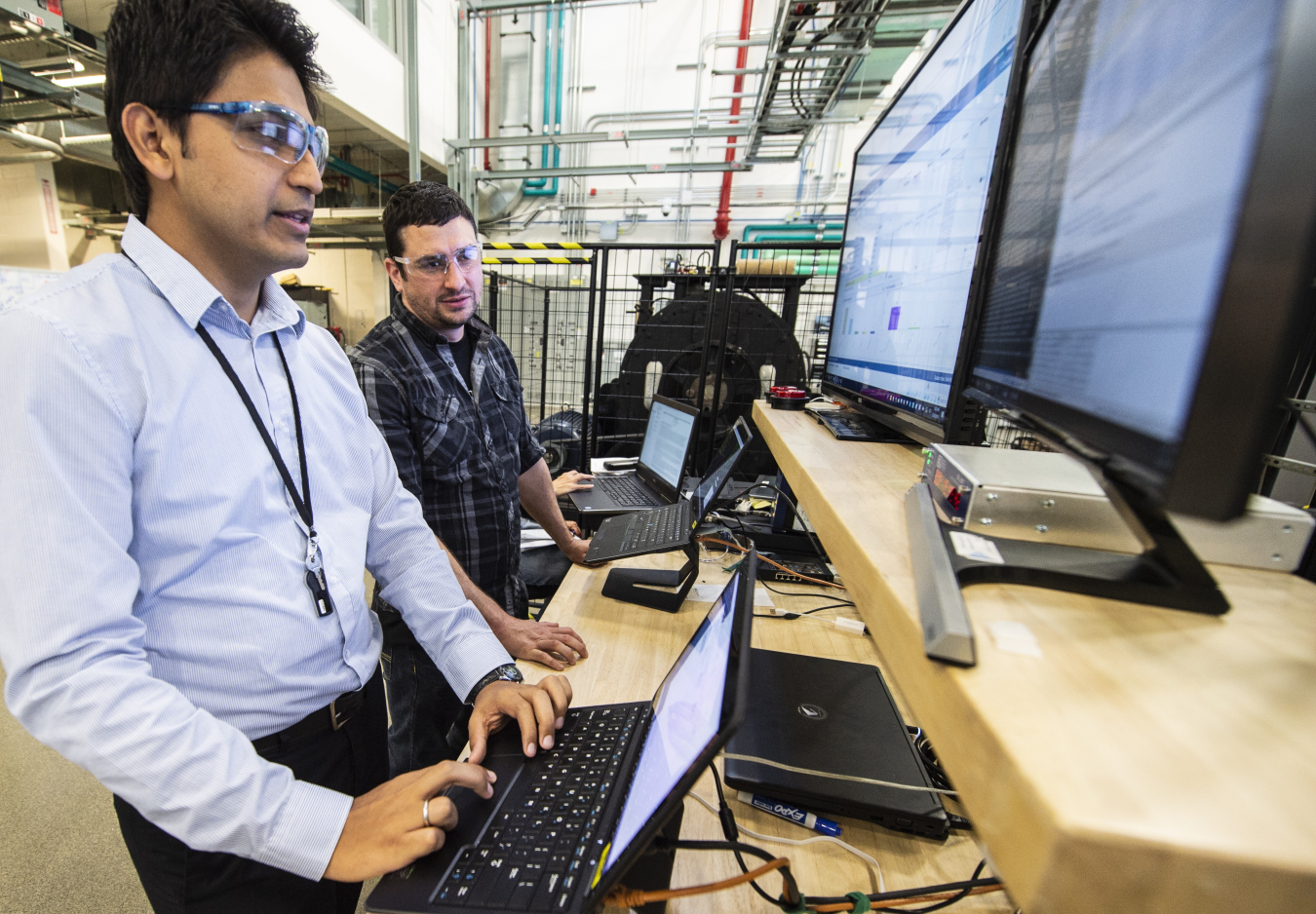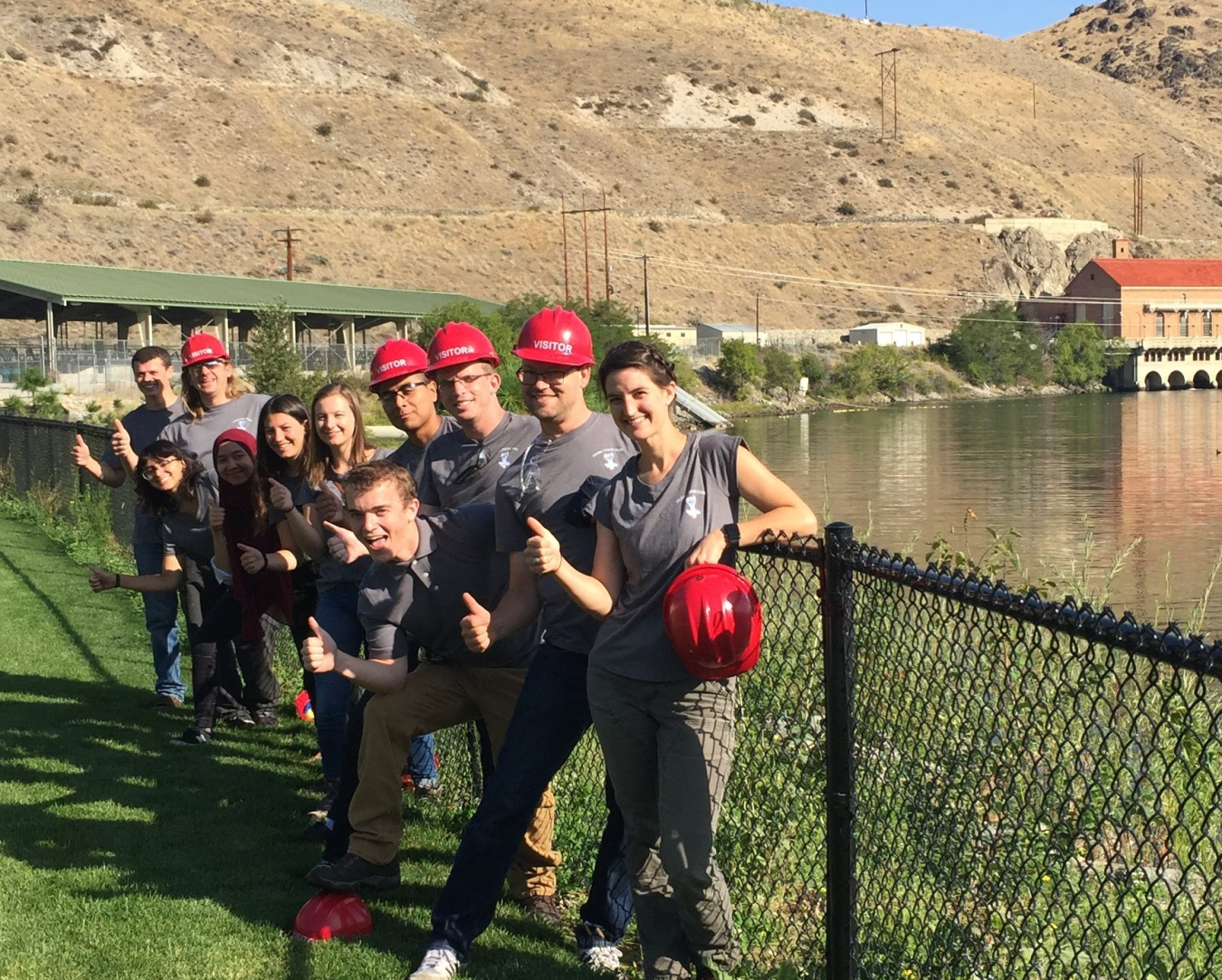Learn more about the hydropower projects in the Water Power Technologies Office’s 2021–2022 Accomplishments Report that are supporting the clean energy transition.
Water Power Technologies Office
May 4, 2023Hydropower, one of the oldest and largest sources of renewable energy, plays an important role on today’s electricity grid and is a foundational part of the clean energy transition. This resource provides 31.5% of total U.S. renewable electricity generation and about 6.3% of the country’s total electricity generation. Hydropower facilities can generate and store energy and provide additional services like flood control and the ability to jump-start the grid after a blackout.
Although hydropower technologies are well-established, the industry has incredible potential and opportunity for growth. For instance, less than 3% of the more than 90,000 dams in the United States generate hydropower.
The Hydropower Program in the U.S. Department of Energy’s Water Power Technologies Office (WPTO) supports projects across the country at national laboratories, academic institutions, companies, and other organizations focused on research, development, demonstration, and commercial activities. In its recently published 2021–2022 Accomplishments Report, WPTO features a selection of these promising hydropower projects.
Developing Technologies and Identifying Opportunities for Hydropower
Several project teams advanced new hydropower technologies and materials. For example, a Natel Energy and Pacific Northwest National Laboratory (PNNL) team tested Natel's Restoration Hydro Turbine, which is designed to help fish move safely through hydropower facilities. Another project focused on developing a modular hydropower concept that incorporates this turbine.
A team led by Composite Technology Development Inc. created and tested a composite hydropower turbine runner. The composite material aims to reduce the weight and extend the useful life of runner blades, which are attached to the rotating part of the turbine. The team found composite blades performed nearly identically to traditional blades made of stainless steel. This lighter, more durable composite material could be a viable candidate for new and replacement runner blades.

An Oak Ridge National Laboratory (ORNL) report found opportunities to develop hydropower on conduits, such as existing pipelines and irrigation canals, in every state. Another team developed two tools and published a report to aid developers’ decisions about whether to add power-generating infrastructure to dams that currently do not generate power, referred to as non-powered dams. Researchers also developed and launched the Water Allocation Tool Enabling Rapid Small Hydropower Environmental Design, which aims to reduce the time and money developers must spend evaluating the design, operation, and feasibility of new, small hydropower projects at streams and sites with existing water infrastructure.
Supporting a Clean and Resilient Electricity Grid
Hydropower will continue to serve a crucial role in the clean energy system, providing storage and flexible energy to help keep the grid running smoothly. In 2022, WPTO launched the Hydropower Operations Optimization (H2Os) Prize. Competitors completed two prize phases during which they developed high-tech solutions to improve hydropower operations and grid resiliency. (Learn more about the H2Os Prize Phase Three winners, which WPTO announced in early 2023!)
Researchers at Argonne National Laboratory and PNNL conducted several analyses to help hydropower operators, developers, and grid planners better understand how hydropower facilities can integrate and be profitable on a changing electricity grid that increasingly relies on variable renewable resources like wind energy and solar power. Meanwhile, a General Electric Research-led team demonstrated a new hydropower turbine design and operating approach that allows plant operators to adjust power output in a few seconds to meet energy demand without needing to start or stop units, which can take up to 90 seconds.
Several WPTO-supported projects also focused on pumped storage hydropower (PSH), which stores and generates electricity by moving water between two reservoirs at different elevations. Researchers from two national laboratories conducted studies that found potential for PSH technology development and highlighted ways to significantly reduce cost, time, and risk for new projects. Another group of researchers explored the potential environmental impacts of closed-loop PSH, which is not connected to an outside body of water, compared to other energy storage technologies. A third project focused on building an optimization model to help grid operators decide how to distribute a PSH facility’s time between generating power and pumping water to store energy.
Modernizing the Hydropower Fleet and Mitigating Supply Chain and Cybersecurity Risks
Several WPTO-supported projects in 2021 and 2022 focused on hydropower fleet modernization, maintenance, and cybersecurity. As part of a series of supply chain assessments, ORNL researchers assessed the U.S. hydropower supply chain and found that while the existing supply chain is mature and effectively supports the nation’s large hydropower fleet, anticipated new construction and the need to refurbish, upgrade, and relicense facilities point to the need to scale up domestic supply chain activities.
Building on hydropower R&D cooperation between the United States and Norway, a collaborative project between ORNL and PNNL developed a one-dimensional model of a hydropower digital twin, the first step in developing a three-dimensional, open-source model that will support in-depth analyses of hydropower plants. This virtual representation of a test hydropower unit in Norway provides equipment manufacturers, end users, and utilities with insights into the real system to inform decisions related to hydropower maintenance, modernization, and asset management.

Meanwhile, a team from the National Renewable Energy Laboratory and Argonne created the Cybersecurity Value-at-Risk Framework tool, which helps hydropower owners and operators understand their individual plant’s cybersecurity risk and the best approach to mitigate those risks.
Enhancing Environmental Performance and Understanding Climate Impacts
Another area of research focused on creating new technologies, tools, and data to better understand and improve the environmental performance of hydropower facilities. For example, a team of researchers optimized advanced machine learning technology that uses sonar data to identify migrating eels near hydropower facilities. The resulting object detection software uses images and videos to identify multiple fish species and distinguish them in near-real time from other objects in the water.
Another project team completed the most comprehensive study into the effects of drought on hydropower generation in the western United States this century. The study found that while drought raises concern for hydropower generation, the overall western hydropower fleet sustained 80% of its average expected generation—even during the most severe droughts over the past two decades.
Encouraging a New Generation of Workers for a Reliable Industry

The U.S. hydropower fleet is expected to continue to grow, and the industry will need a new generation of workers to maintain that momentum. In 2022, WPTO launched the Hydropower Collegiate Competition to support that growth. The competition will pave the way for a new generation of diverse, highly skilled workers to modernize the U.S. hydropower fleet and chart their careers in clean energy. (The final event for the 2023 competition is taking place May 7–10 at Waterpower Week in Washington, D.C. Stay tuned to the WPTO website to learn the winners!)
Hydropower is the steadfast foundation the country needs to build a carbon-free electricity sector by 2035 and a net-zero-emissions economy by 2050. WPTO’s 2021–2022 Accomplishments Report features just a few of the projects helping to bolster this renewable energy powerhouse.
Learn more about hydropower and explore the hydropower accomplishments in the WPTO 2021–2022 Accomplishments Report. Stay up to date with the latest hydropower funding opportunities, events, and news by subscribing to the monthly Water Wire and the bimonthly Hydro Headlines newsletters.

